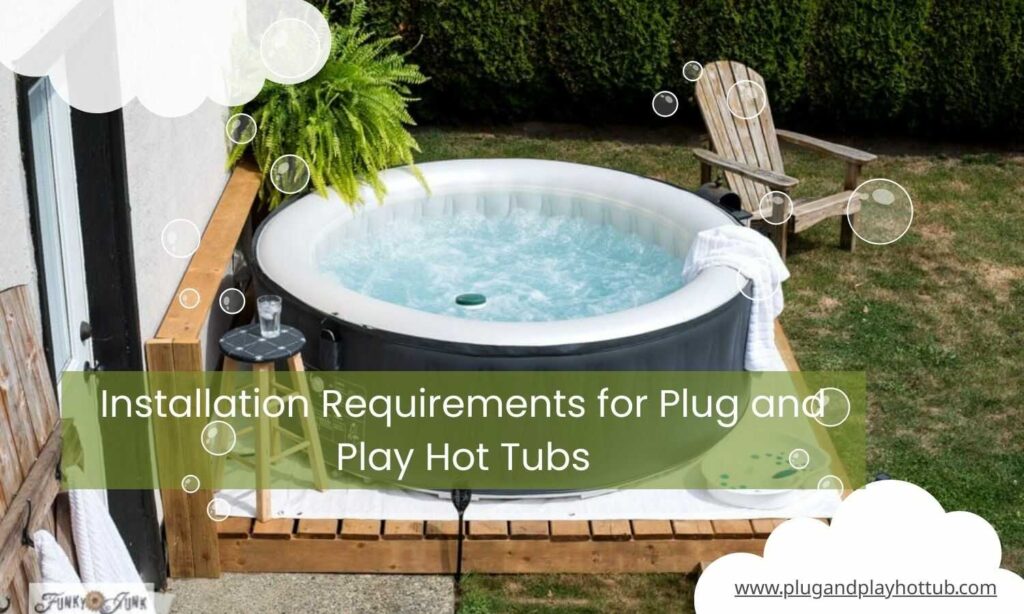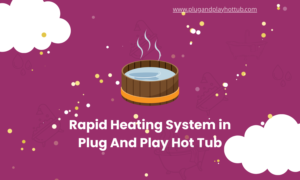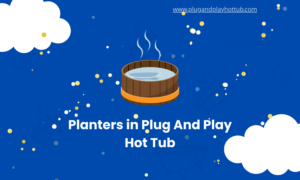
Plug-and-play hot tubs provide homeowners with an appealing way to enjoy backyard hydrotherapy conveniently. Their ease of setup skips the lengthy installation and renovation work needed for traditional built-in hot tubs.
However, fully realizing the benefits and safety of a plug-and-play spa still requires some preparation and planning beforehand.
This article will outline the key installation requirements to facilitate an efficient setup process so you can start unwinding in your portable self-contained hot tub.
1. Site Preparation
Choosing a Location
When selecting where to place your plug-and-play hot tub, consider the following:
- Convenience – Choose a spot that allows easy access for all users and is near a GFCI outlet. Ensure the location will accommodate the size of the entire tub with the cover open.
- Privacy – Pick a private location if the tub will be used for relaxation or therapeutic use. Consider views from neighbors as well.
- Aesthetics – Choose a location that complements your outdoor living space. Consider sightlines from inside the home too.
- Environment – Avoid placing under trees and overhanging structures. Consider sun exposure or wind protection needs too.
Ensuring a Solid and Level Foundation
It’s crucial to provide a solid, level foundation for the plug-and-play hot tub to rest on. The surface should be:
- Structurally sound concrete pads, concrete pavers, or bricks
- At least 4 inches thick
- Perfectly flat and level surface with no more than 1⁄4 inch drop over 10 feet
This prevents structural damage and allows even water distribution for proper jet function.
Providing Adequate Drainage
Good drainage is key for preventing flooding issues under and around your hot tub.
- Use gravel, sand, or paving stones to create a perimeter space for water runoff
- Ensure the area slopes away from the foundation of nearby structures
- Consider installing a french drain system if the area is prone to collecting rainwater
2. Electrical Requirements
Using a Dedicated GFCI Circuit
Plug-and-play tubs require a dedicated 240V circuit with GFCI protection. This means:
- The circuit powers only the hot tub and no other devices
- The circuit has a GFCI breaker that protects from electric shock
Matching Amperage Rating
The electrical outlet must match the amperage rating on the hot tub’s data plate label.
- Using lower amperage could damage the hot tub equipment
- Higher-rated outlets are okay but more expensive
Installing Appropriate Outlet
The outlet receptacle must align with the plug configuration on the hot tub power cord. This is according to National Electric Code regulations. Common options are:
- NEMA 6-50R
- NEMA 14-50R
- NEMA 10-50R
The outlet must also be weatherproof and located 5 feet from the tub’s exterior with unobstructed access.
3. Planning Delivery Logistics
Dimensions and Weight Considerations
- Doorways, gates, and paths must accommodate the hot tub’s dimensions
- Verify that the route can support weight during transportation
- Rental equipment like lift gates or specialty dollies may be needed
Moving Path Access
- Clear a straight pathway at least 4 feet wide from curb to tub location
- Level ground is best. Avoid steep slopes or stairs.
- Remove obstacles like branches or fences blocking access
Unpacking ProcedureWhen tub arrives:
- Carefully inspect external structures and components for damage during shipping
- The review included the manufacturer’s setup literature
- Have tools ready to remove securing straps and packaging materials
- Take pictures of the unpacking process to document the existing condition
4. Filling and Installation
Following Manufacturer Fill Instructions
Refer to the user manual for step-by-step guidance on:
- Filling the tub with garden hose to the correct level
- Turning on the GFCI breaker and testing the electrical system
- Activating jet pumps and checking for leaks
- Adding start-up chemicals for water balancing
Testing Hot Tub Functions
Fully test all jets, lighting, buttons, and system controls. Verify:
- Powerful jet pressure
- Proper lighting operation
- Smooth equipment function
- Water drains effectively from overflow areas
Contact the manufacturer if issues are detected.
Adding Start-Up Chemicals
Most plug-and-play hot tub makers recommend:
- Mineral purifier
- Metal remover
- Non-foaming tub cleaner
Using a specialty hot tub chemical startup kit streamlines the process. Follow all chemical packaging instructions carefully. Consider professional water analysis for ideal water balance.
Conclusion
In summary, plug-and-play hot tubs appeal to homeowners given their quick and simple setup – living up to their promise of being able to plug in and enjoy a rejuvenating spa experience.
While the convenience factor skips past the complex installations of a traditional hot tub, some key requirements during site planning, delivery, hook-ups, and installation are still needed to ensure everything functions properly.
Following the tips outlined for electrical guidelines, foundation prep, moving logistics, and initial chemical balances will allow you to safely enjoy the therapeutic benefits of your new plug-and-play hot tub for years to come.



